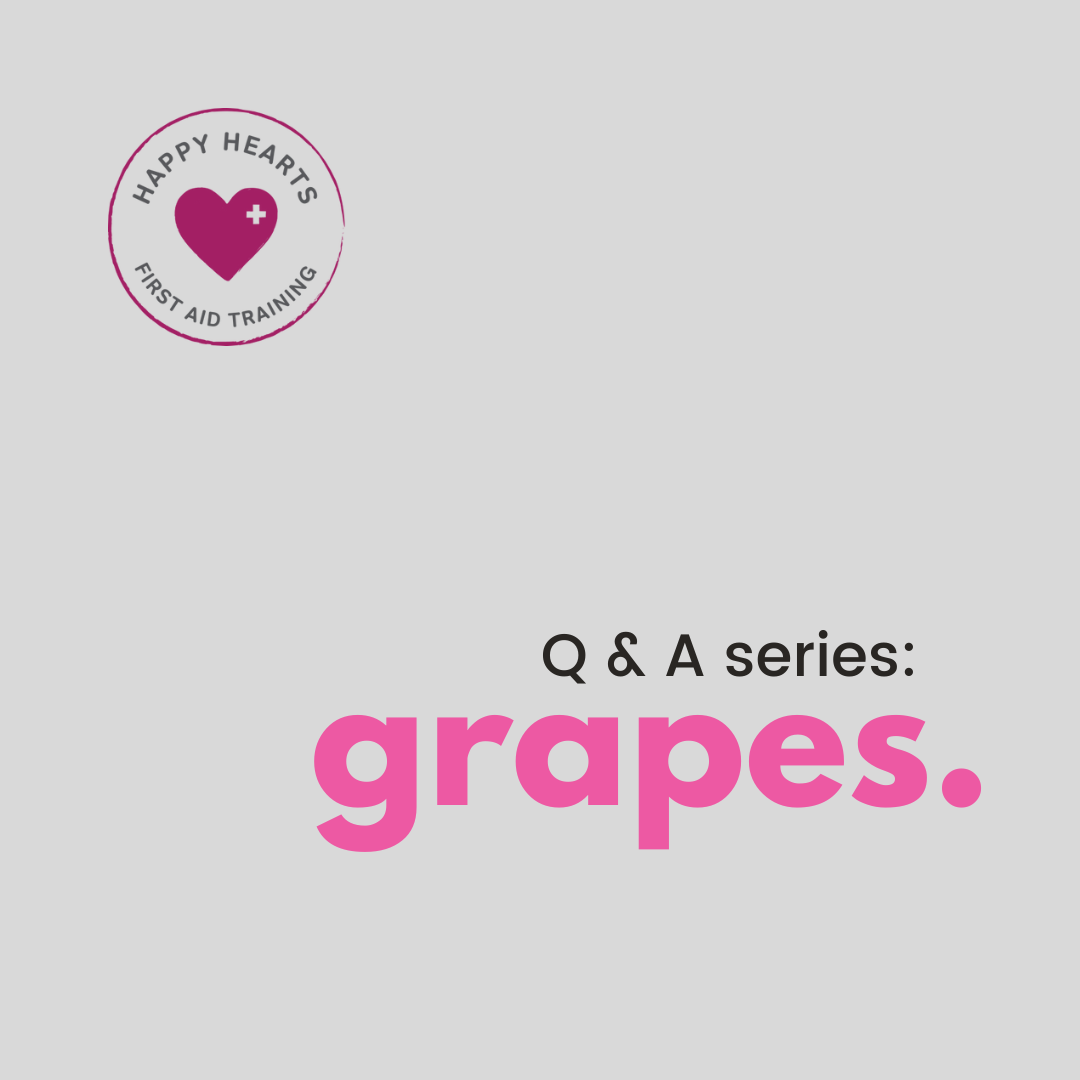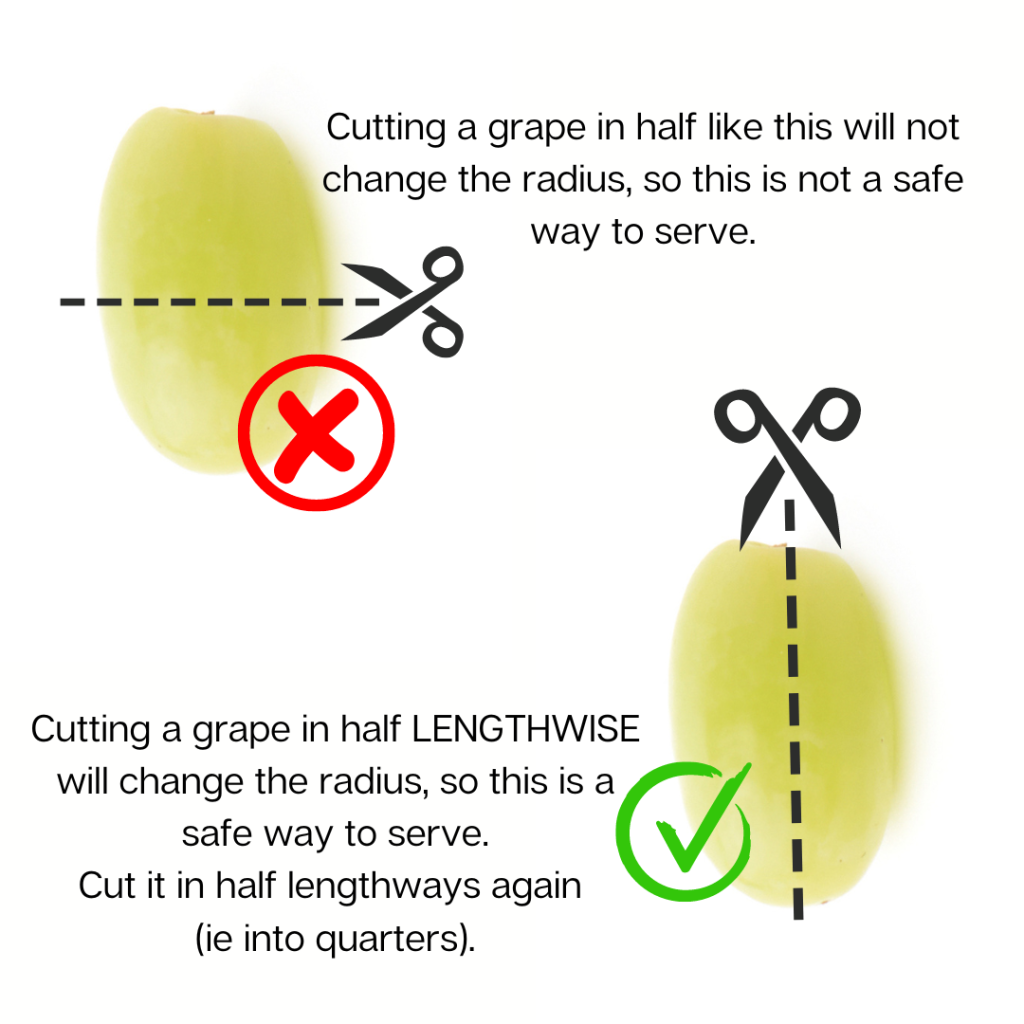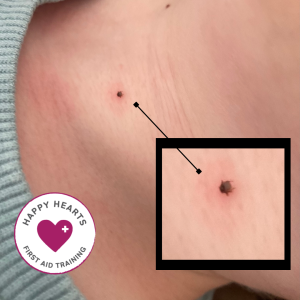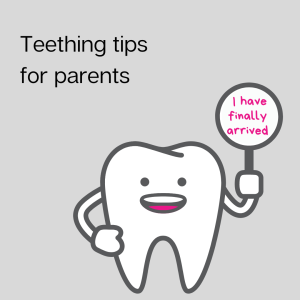The lowdown on why whole grapes are such a risky food.
On Instagram I have recently invited parents to ask me any general baby and toddler first aid or safety questions that they might have. It came as no surprise that the first question related to grapes:
“At what age can I stop cutting my child’s grapes up?”
This blog will answer this question, but before hand chat through some really essential things that every parent (and grandparent!) must know about whole grapes.
Let’s dive in!
If you quiz any parent about the top foods that are risky from a choking perspective, I guarantee that “grapes!!!” will be one of the very first answers called out, if not the first.
The media has done wonders in highlighting that these juicy little things definitely do provide a risk for children. Understanding WHY they are so risky will help you to identify other, less well-known foods that could also carry a higher risk. The purpose of this blog is to teach you about the qualities of food that might make them dodgy, and to help you provide food that is safely prepared to your little one.
What is it about whole grapes that make them dangerous?
The size and shape. The radius of a whole grape is similar to that of the upper airway, meaning that if lodged there it can completely occlude (fancy word for “cover up”) the airway. Having an open airway is what we need to exchange gas and breathe.
The texture of the skin. The skin of a grape isn’t slippery, rather it is really smooth. It is this smooth texture that means that if one gets stuck, it is difficult to remove it. Even with our go-to choking manoeuvres of back blows and thrusts.
Kids love grapes. Grapes are a firm favourite of my three kids. They are often served at parties, to provide a gesture of green (or purple!) amongst the sea of easy- to- prepare- beige- food. I haven’t met many kids that don’t like grapes.
It is these three things that make grapes a higher- risk.

If you think about the size and the shape of a grape, you can now apply that same principle to any foods a similar size. So foods like blueberries, olives, whole nuts etc all pose a higher risk.
If you think about the texture of the skin of a grape, you can now apply that same principle to any foods with a similar texture or skin. For example cherry tomatoes.
What can you do to make things safer?
- Know that grapes do pose a risk, and understand the reasons why (if you have read this far… tick!)
- Speak to the people around you about grapes, and your expectations on how/ when/ if you would like them served. Your in- laws/babysitters/child-minders will no doubt be happy that you have made this really clear.
- Prepare grapes appropriately. Cutting into four lengthways (see image below) would be appropriate for a toddler. If the grape was really big, if your little one is younger, or if you remain worried, dice them up smaller than this.
- Ensure you supervise your child eating. Choking is silent. We will not hear them choking. Staying with your child while they eat means that you are providing a safe environment.
- Ensure your child is sitting down to eat (you can role model this every meal).
- Encourage your child to take their time when eating (you can also role model this one).
- Talk to your child’s school or nursery about the potential of becoming “grape free”. Most schools and nursery’s are nut free, and increasingly we are seeing schools refusing to have grapes in a packed lunch. This might be something to suggest, depending on the circumstances.

Let’s be honest- if you are in a rush and the kids are hangry- chopping up grapes can feel like a pretty tedious task. When I feel like this, I just remind myself how a few extra moments spent cutting them up appropriately is making them such a safer food, and I am keeping my kids safe by doing so. Suddenly, it feels like a lot less of a task.
The guidelines advice to continue to serve grapes cut until the age of 5 years old. It is thought that at the age of 5 years old, most children have mastered the skill of chewing and eating.
Bu please remember that each family is different, each child is different, and to be honest, each grape is different! Last summer I contemplated cutting the grapes that I had on the side of a cheese board for my husband and I… they were next level MASSIVE!
If you would like to learn more about high risk roods, and how to identify a choking situation, have a look at my instant access online courses.



